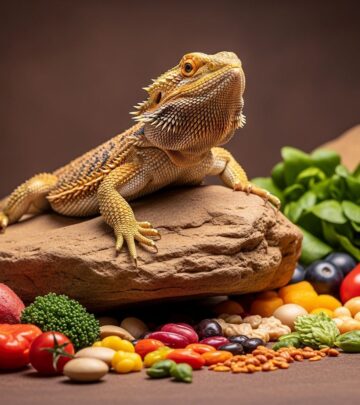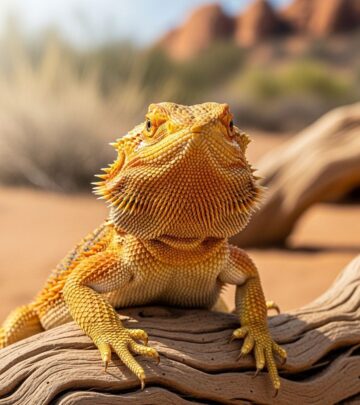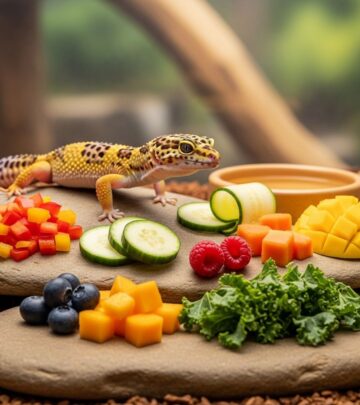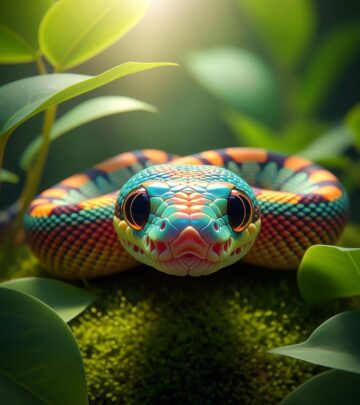Green Iguanas as Pets: Essential Guide to Care, Handling, and Habitat
Gentle interaction and tailored nutrition foster trust and vitality in pet iguanas.
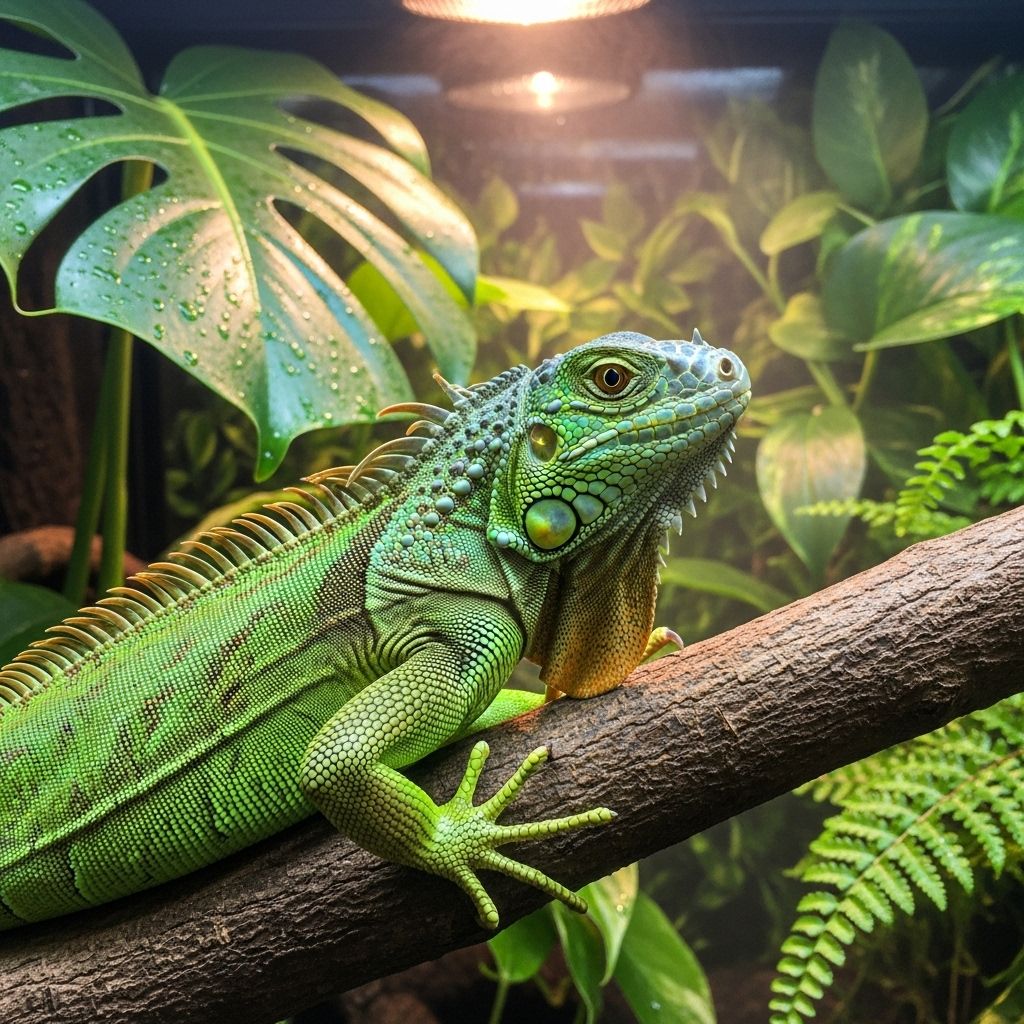
Green Iguanas as Pets: An Essential Guide
Green iguanas (Iguana iguana) are one of the most recognizable and intriguing reptiles kept as pets. Their vibrant coloring, impressive size, and intelligent nature may attract reptile enthusiasts, but successful iguana care requires commitment, knowledge, and preparedness. This guide covers everything prospective or current iguana owners need to know, from fundamental setup to daily care, health concerns, and handling advice.
Overview: Are Green Iguanas Good Pets?
Green iguanas can be rewarding pets for those prepared for their care needs and behavioral quirks. However, they are not suitable for beginners due to their size, dietary requirements, and habitat complexity. With proper attention and patience, iguanas may become friendly and interactive, but they also demand a significant investment in their environment and health maintenance.
Key points include:
- Long lifespan: Up to 15–20 years with optimal care
- Large adult size: 4–6 feet in length
- Specialized food and habitat: Herbivorous diet and large enclosure with specific lighting and humidity needs
- Unique personality: Intelligent, with distinct behavioral patterns
Physical Characteristics and Lifespan
Adult green iguanas are striking in appearance. Their distinguishing features include bright green scales, a prominent dewlap (the flap of skin under the chin), and a spiky dorsal crest.
Key physical details:
- Size at maturity: 4–6 feet, including tail
- Weight: Typically 10–20 pounds for a healthy adult
- Lifespan: 15–20 years; some may live longer with ideal care
Young iguanas are usually more vivid in coloration. As they age, their colors may deepen or shift, sometimes showing patches of blue, orange, or red.
Care Requirements
Before bringing a green iguana home, review these essential care components:
Enclosure and Habitat
- Enclosure size: Adult iguanas need at least 6′ long x 6′ high x 3′ wide. Vertical space is critical for climbing.
- Materials: Enclosures may be custom-built; glass tanks can work for young iguanas, but adults require larger structures.
- Ventilation: Good airflow prevents mold and maintains air quality.
Include sturdy branches, shelves, or walkways for climbing, and a large, flat rock or shelf for basking.
Secure lid is mandatory to prevent escapes.
Heat and Lighting
- Heating: Iguanas are ectothermic (cold-blooded) and depend on their enclosure for warmth.
Provide a thermal gradient with basking area at 95–100°F, cool area at 75–85°F. - Lighting: Full-spectrum UVB lighting is mandatory for proper calcium metabolism and bone health. UVB should be replaced every 6–12 months per manufacturer instructions.
- Humidity: Maintain at 70–90% to support shedding and hydration.
Note: Natural, unfiltered sunlight (not through glass) is ideal for at least two hours per day if possible.
Substrate
- Avoid loose substrates like sand or gravel.
- Paper, reptile carpet, or tiles are best for easy cleaning and reducing ingestion risks.
Cleaning and Maintenance
- Spot-clean daily for droppings and uneaten food.
- Deep clean weekly with a reptile-safe disinfectant.
- Ensure enclosure is fully dry before returning the iguana.
Diet and Nutrition
Green iguanas are strict herbivores. Their diet should consist mainly of:
- Fresh leafy greens: collard greens, mustard greens, turnip greens, dandelion greens
- Vegetables: squash, green beans, bell peppers
- Occasional fruits: mango, papaya, strawberries (as treats only)
Effective iguana diets avoid animal proteins, dog/cat food, or insects, which can cause health issues.
| Food Type | Ideal Frequency | Notes |
|---|---|---|
| Leafy Greens | Daily | Main staple; at least 60% of meal |
| Vegetables | Daily | 20–30% of meal |
| Fruits | Weekly (sparingly) | Less than 10% of meal |
Always provide fresh water in a heavy, tip-proof bowl and mist the enclosure to maintain humidity.
Handling and Behavior
Green iguanas are intelligent and can develop bonds with their caregivers, but they require patient taming and careful handling.
- Allow new iguanas to acclimate for up to two weeks before attempting handling.
- Interact daily through talking, gentle movement, and offering food by hand.
- Start handling with gentle pats and feeding from the hand.
- Never grab from above; always scoop from below, supporting the entire body.
- Taming takes months; respect boundaries and avoid overwhelming the animal.
With positive interactions, iguanas may voluntarily climb onto you and become more inquisitive, affectionate, and active.
Health and Veterinary Care
Annual check-ups with an experienced exotic vet are highly recommended for overall health assessment, fecal parasite testing, and bloodwork as needed.
- Transport in a secure carrier with supplemental heat (in cold weather).
- Submit enclosure photos for vet review.
Signs of a Healthy Iguana
- Active and alert behavior
- Clear eyes; no swelling or discharge
- Healthy, unbroken skin without discoloration
- Clean nostrils
- Regular, formed droppings and a clean vent
- Normal appetite
Common Illnesses
- Bladder stones
- Bacterial infections and mouth rot
- Kidney disease
- Egg binding (in females)
- Dystocia
- Abscesses
- Foreign body ingestion
Contact a veterinarian if you notice:
- Lethargy or reluctance to move
- Stuck shed
- Loose stool or diarrhea
- Open-mouth breathing
- Mouth discoloration/ulcers
- Loss of appetite or decreased stool production
- Unexplained skin discoloration, swelling, or lameness
Grooming: Shedding and Nail Care
- Shedding: Iguanas shed in patches, not all at once. Ensure high humidity (70–90%) and avoid excessive handling during shedding.
- Nail care: Monitor the length and condition of your iguana’s nails. Trim as necessary using reptile-safe nail clippers and consult a vet if unsure.
Cost and Commitment
Owning an iguana is a long-term commitment. Costs include the enclosure (often hundreds of dollars for adult size), monthly food expenses, heating and lighting equipment, veterinary care, and time. Iguanas generally do not make good pets for children or those seeking a low-maintenance animal.
- Enclosure setup: $300–$1200 (more for custom cages)
- Lighting and heating: $50–$200 per year
- Food: $20–$50 per month
- Veterinary care: $100–$300 per checkup or treatment
Pros and Cons of Iguanas as Pets
| Pros | Cons |
|---|---|
|
|
Frequently Asked Questions About Green Iguanas
Q: Do green iguanas make good beginner pets?
A: No; green iguanas have complex care requirements and are best suited to experienced reptile keepers.
Q: How big will my iguana get?
A: Adults average 4–6 feet long, including tail, and may weigh up to 20 pounds.
Q: Can iguanas be handled?
A: Yes, with patience and gentle, regular interaction; proper taming may take months.
Q: What should I feed my iguana?
A: Feed a diet of fresh leafy greens, vegetables, and occasional fruits. Avoid animal proteins entirely.
Q: How often do I need to go to the vet?
A: Annual check-ups are advised, with immediate visits for signs of illness.
Additional Considerations
- Legal aspects: Check local regulations before purchasing. Some areas may restrict iguana ownership.
- Environmental impact: Never release unwanted iguanas into the wild.
- Socialization: Iguanas are solitary and do not require companions.
- Travel and relocation: Moving with an iguana is complicated; ensure appropriate transport.
Summary
Green iguanas are beautiful, intelligent reptiles and can make fascinating pets for knowledgeable, dedicated owners. They require carefully maintained habitats, specialized diets, routine veterinary care, and patient handling. With proper planning and commitment, iguana ownership can be an extraordinary, rewarding experience, but should never be entered into lightly.
References
- https://www.petmd.com/reptile/green-iguana-care-sheet
- https://reptifiles.com/green-iguana-care-sheet/
- https://www.tortoisetown.com/iguana-care-guide/
- https://wpvet.com/exotic-pets-care-guides/green-iguana-care-guide/
- https://www.birdexoticsvet.com/iguana-care-tips
- https://vcahospitals.com/know-your-pet/iguanas—owning
- https://www.dockerymobleyvets.com/site/blog/2023/02/15/iguana-care-guide
- https://www.youtube.com/watch?v=wxCKYImEHMQ
Read full bio of medha deb







